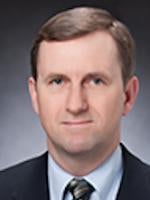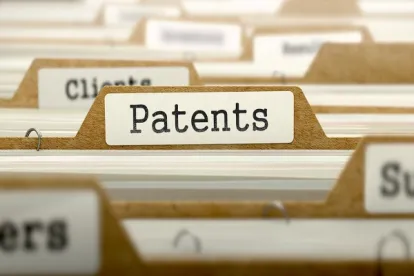PAICE LLC V. FORD MOTOR CO., case nos. 2017-1387, 2017-1388, 2017-1390, 2017-1457, 2017-1458, Feb. 1, 2018. Before Lourie, O’Malley and Taranto
Takeaways:
-
Chenery (Securities & Exchange Commission v. Chenery Corp., 318 U.S. 80 (1943)) requires that administrative agencies provide a reasoned basis for their decisions. In the context of post-grant reviews, Chenery requires the Board’s explanation to “be capable of being reasonably . . . discerned from a relatively concise . . . discussion.”
-
Substantial evidence supporting Board’s fact finding regarding the prior art disclosure includes consistent description of that prior art in the challenged patent, and Federal Circuit’s prior rulings involving related patents.
-
The language “[PRIOR ART], which is incorporated herein by this reference” is sufficient to incorporate by reference the prior art material in its entirety.
-
For claims to be entitled to a priority date of an earlier-filed application, the application must provide adequate written description support for the later-claimed limitations.
Procedural Posture:
Patent owner Paice appealed from PTAB’s final written decisions in six inter partes reviews (“IPR”) holding certain challenged claims of its two hybrid-vehicle patents unpatentable. The Federal Circuit affirmed in part, vacated in part, and remanded.
Synopsis:
-
PTAB procedure: Chenery requires the Board to “provide a reasoned basis for” its decision, that is, an explanation “capable of being reasonably . . . discerned from a relatively concise . . . discussion.” Here, the Board’s decisions clearly rejected Paice’s primary arguments, its obviousness determinations “flow directly from its rejection of these arguments,” and its analysis “is commensurate with Paice’s arguments.” Also, the Board cites “to the relevant portions of Ford’s briefing that explain how the prior art discloses the relevant claim limitations,” collectively making its analysis “readily discernible and sufficient under Chenery.”
-
IPRs: the Board’s fact-finding regarding the disclosure of Severinsky prior art reference was supported by substantial evidence. The Board found that Severinsky disclosed “a torque-based system for selecting operating modes.” This was consistent with the description of Severinsky in the challenged patent’s specification, and Federal Circuit’s prior rulings involving related Paice patents.
-
Claim Construction–BRI: The Board correctly construed the “abnormal and transient conditions” claim limitation under the Broadest Reasonable Interpretation (“BRI”) standard to capture “starting the engine and stopping the engine,” including in “city traffic and reverse operation.” There was no intrinsic evidence in the ’634 patent for construing this limitation, so the Board was justified in turning to the ’634 patent’s parent, the ’347 patent, for clues. The Board’s construction was also consistent with Paice’s statements during prosecution of the related ’097 patent.
-
Claim construction–disclaimer: Paice’s statement made during prosecution of the related ’097 patent that “city traffic and reverse operation are normal conditions” did not amount to disclaiming “city traffic and reverse operation” from the scope of “abnormal and transient conditions” limitation. The Board appropriately concluded that “abnormal and transient conditions” include starting and stopping the engine in all modes of operation; starting and stopping the engine is a “transient” condition insofar as it is temporary.
-
Obviousness: The Federal Circuit affirmed the Board’s obviousness findings as to various claims. Substantial evidence supported the Board’s finding that the Severinsky reference disclosed a torque-based system for selecting operating modes. The Board’s construction of “abnormal and transient conditions” was the broadest reasonable construction, and substantial evidence supported the Board’s findings that Severinsky disclosed this limitation. Finally, the Board’s analysis was readily discernible and sufficient under Chenery.
-
Incorporation by reference: The Board erred in concluding that Paice’s ’817 application, to which the ’634 patent claims priority, did not incorporate Severinsky disclosure by reference. The broad and unambiguous language in the ’817 application’s incorporation-by-reference clause: “U.S. Pat. No. 5,343,970 (the “’970 patent”) [Severinsky], which is incorporated herein by this reference,” is sufficient to incorporate Severinsky in its entirety because it identified with detailed particularity the specific material to be incorporated and where that material could be found. The Board erred in relying on the second sentence from the incorporation-by-reference clause, “Where differences are not mentioned, it is to be understood that the specifics of the vehicle design shown in the ’970 patent are applicable to the vehicles shown herein as well,” which has no bearing on the extent of incorporation.
-
Priority Date: the Board found that the ’455 PCT publication, which lists the same inventors and was published more than one year before the filing date of the CIP application in which the “electrical claims” first appeared, was 102(b) prior art to the challenged electrical claims of the ’634 patent. Paice argued that the ’455 PCT publication is not prior art because the ’634 patent claims priority to the ’817 application, which predates the ’455 PCT publication. The Federal Circuit remanded to the Board to determine whether the ’817 application, with the entire Severinsky disclosure incorporated therein, provides the requisite written description support for the ’634 patent’s electrical claims.






 />i
/>i
